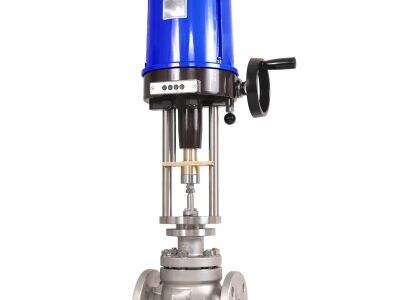Control valves are critical components that regulate the flow of liquids and gases in a wide variety of industries. These valves are important for the regulation of volume flow distribution. They operate by opening and closing to allow fluids to pass, depending on how much pressure or how much flow is needed at any particular point in time. For instance, if too much pressure builds up, the valve can shut slightly to prevent the fluid from flowing too fast. If instead if more fluid is needed the valve can open more to let it through Xiyena as a control valve manufacturer provides a complete range of products for a wide range of applications and applications.
Why Control Valves Matter
Control valves are important because they help control the flow of liquids and gases, and they need to work well to ensure that many processes flow smoothly and at the right speed. They can open and close their valves, making fluids flow faster or slower, and, in some cases, whether the fluids flow toward them or away from them. This is particularly crucial in sectors in which safety is a major issue. These valves control the fluids pressure in such a manner as to ensure security.
Control Valves Applications
Examples of control valve industries are oil and gas, chemical processing and manufacturing, food & beverage, and water treatment systems. All of these industries depend on control valves to maintain the integrity of their operations and outputs.
Impact of Pressure, Temperature, and Flow on Control Valves
A control valve can be a pressure, temperature or flow control valve. When these pressures change, the valve must open or close to limit the flow if there is an overflow, or allow the flow if there is an underflow. Likewise, if the temperature of the fluid varies, the three way valve may need to widen or become more narrow to prevent the fluid from expanding or contracting excessively. As with the flow rate; if flow rate up or down, the valve need to be opened or closed differently for everything operate correctly. This adaptability is the reason these devices are so important in the control of numerous systems.
Parts of Control Valves
There are many components of a Control valve that are important to their operation. The valve body is the first part that consists of the openings to the fluid. Depending on the type of fluid being controlled, valve bodies are often constructed of different types of material. (I.e., some materials are better for hot drinks and some are better for cold drinks.) The actuator, which is the second portion of the valve, moves the valve up and down or in an open and close position. As the valve is designed, the actuator can be powered in various ways, including electricity, air pressure, or liquid pressure. The final portion is defined as the trim, consisting of multiple smaller components working to control fluid flow. The trim can consist of components such as the valve seat, valve plug, and valve stem, and each of these components has a specific function in controlling the flow.
Where Control Valves Are Used
Counters: Depending on what control valve type was utilized in the installation, they are used in a wide variety of industries and applications. Such valves, for instance in the oil and gas industry, allow the flow of crude oil and natural gas through pipelines and processing plants to be controlled. This is extremely crucial since the right volume of oil or gas is supplied in a safe and secure manner. For instance, in the chemical processing sector, control valves can regulate the flow of chemicals being mixed or processed. This allows for the right products to be developed while also maintaining safety through the process. Control valves for food and beverage applications are used to control the flow and pressure of the liquid used in production or packaging. In the water treatment sector, for example, control valves are utilized to control the flow and pressure of water at different stages, implementing a crucial step in obtaining clean and safe water for human consumption.
How to Maintain Control Valves Performance
In order for control valves to function optimally, there are some best practices to follow. Proper maintenance is one of the most important practices. Includes regular inspection, cleaning, and lubrication of the valves. This care prevents failure and maintains smooth operation of the valves. Another important practice is to size and select the valves correctly. Selecting a valve appropriate for the application and making sure that it is installed and configured properly. This avoids the issues of valves being underutilized or overused, resulting in machinery failure and inefficiency, respectively.
In brief, plug valve are crucial components for almost all industries and applications. Knowing how they work and how to take care of them is the key to making sure that they work properly and efficiently. When equipped properly, operated correctly and maintained well by companies, control valves can be held to high performance standards to achieve maximum productivity and safety. Xiyena is a leading provider of high quality control valves and related services globally.
 EN
EN
 AR
AR
 CS
CS
 FR
FR
 HI
HI
 KO
KO
 PL
PL
 PT
PT
 RO
RO
 RU
RU
 ES
ES
 TL
TL
 IW
IW
 ID
ID
 LT
LT
 SR
SR
 SL
SL
 UK
UK
 VI
VI
 ET
ET
 HU
HU
 TH
TH
 TR
TR
 FA
FA
 MS
MS
 UR
UR
 BN
BN
 JW
JW
 MN
MN
 NE
NE
 TA
TA
 MY
MY
 KK
KK
 UZ
UZ
 KY
KY



